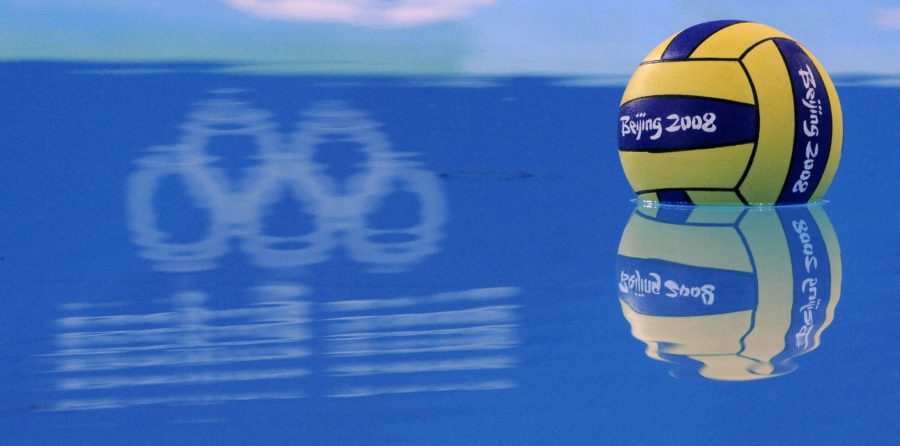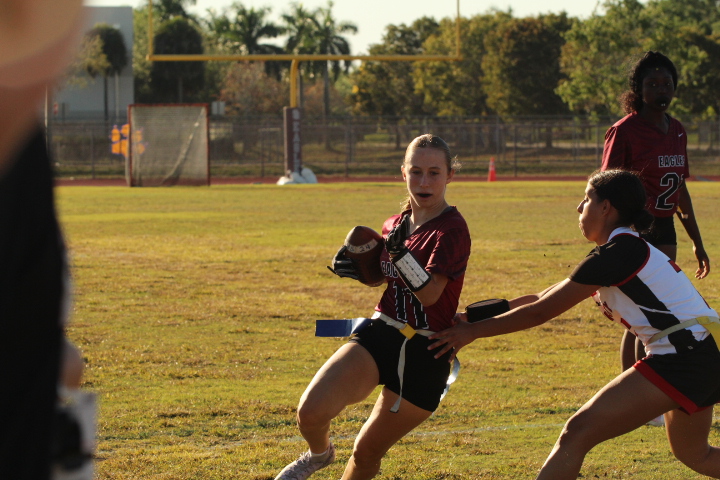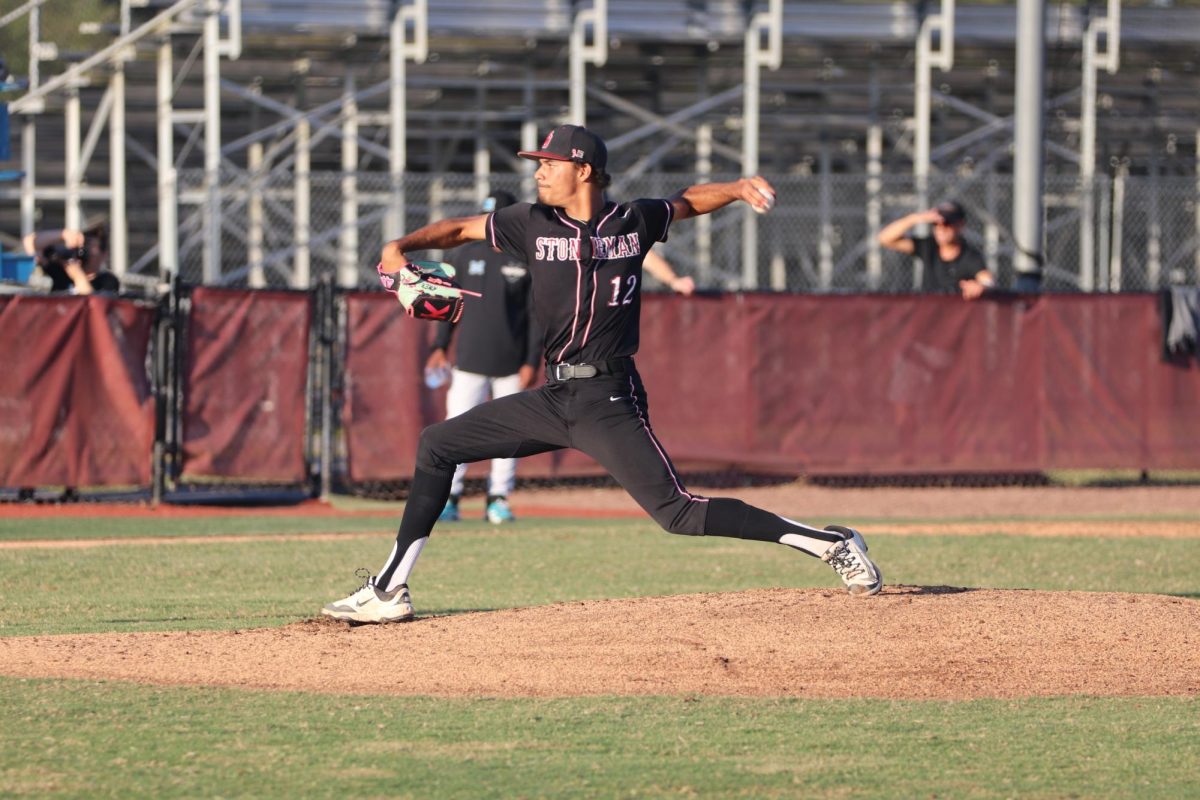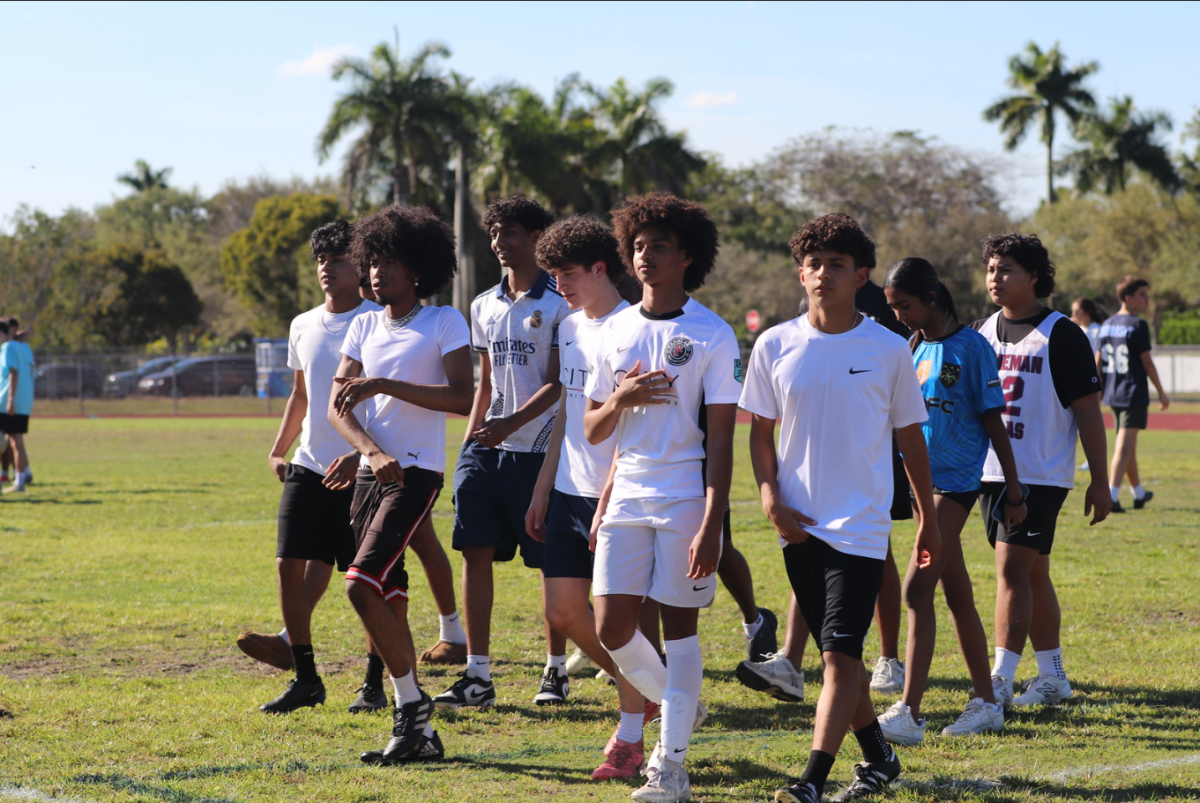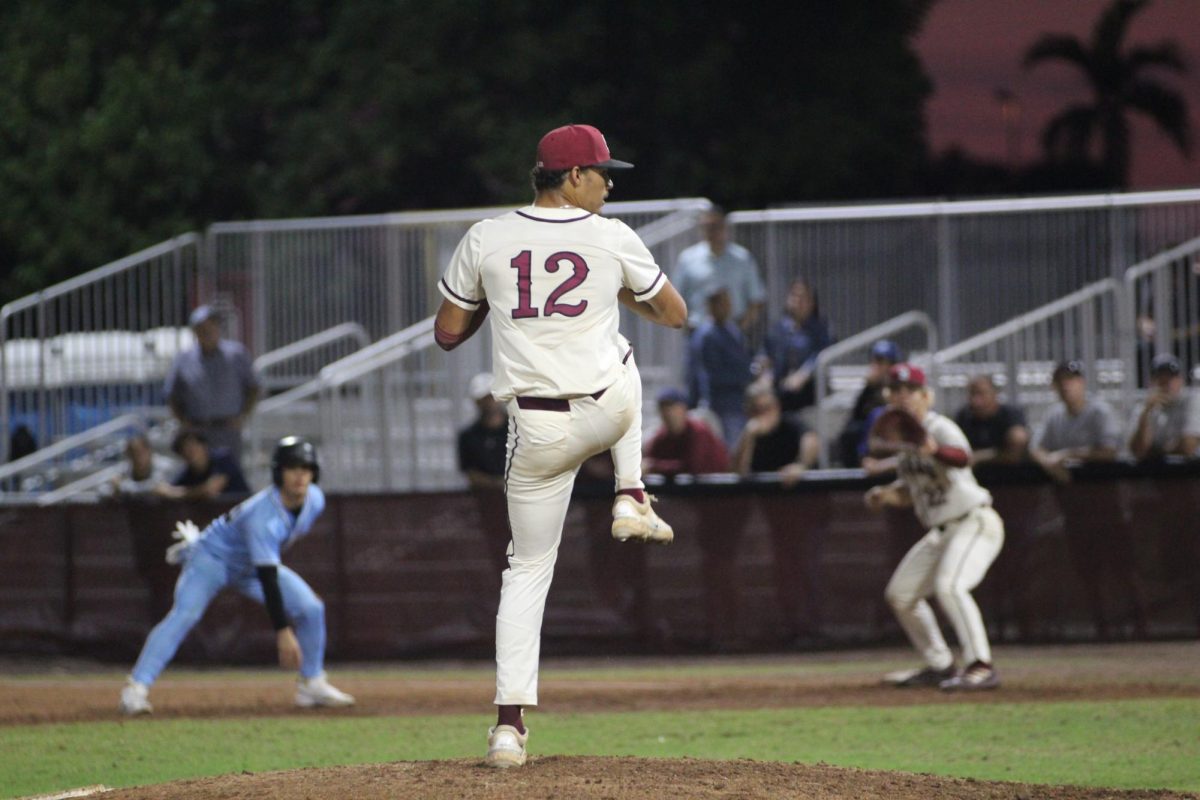Water polo is a sport with many complex rules and is played in a pool with a ball similar to a volleyball.
The Basics
A water polo game is four quarters long, and the team that scores the most goals before time runs out wins the game.
Six players and a goalie are allowed to be in the pool at a time, and up to twenty players can suit up for a game. Substitutions for the seven players occur during breaks, timeouts, or after goals are scored. After each goal, possession of the ball switches to the other side.
Water polo is played in an indoor or outdoor swimming pool that is 30×20 meters, with either a mounted or floating goal on each side. The pool is designed to be deep, so that players can’t stand on, or touch the floor. In order to move around in the pool, the players are supposed to tread water. The athletes score goals by throwing the ball into the goal, and they move the ball by throwing it to others or pushing it with one hand. However, goalkeepers are allowed to use two hands. Because of this, goalkeepers cannot cross the mid-pool line.
The game starts with a swim-off towards the mid-pool line, as players race to the center of the pool to gain the first possession by taking the ball.
Positions
Besides goalkeepers, there are many other important water polo positions. After a goal is scored, the point starts off with the ball, passing it to others or pushing it forward. They are in charge of voicing the play.
The hole set is the player who shoots goals and draws fouls. Wings and drivers must be quick and able to change directions in the pool, because it is their job to create screens and drive down the goalposts without being pushed around.
Wings and drivers may also have to play out of position sometimes, so they must know how to play other positions. When in position, one of their main tasks is getting the ball to the hole set.
Covid-19 Restrictions
This year, the Marjory Stoneman Douglas High School water polo team, like professional water polo teams, has been taking precautions to prevent the spread of Covid-19.
“We have been getting our temperature checked during every practice and game,” MSD wing position Harjith Pradeep, a sophomore, said. “We also need to wear masks if we are not in the pool.”
Last year, many spring sports at MSD ended abruptly due to the Covid-19 pandemic, water polo included. Pradeep noted that he was surprised that the team actually had a season during the pandemic.
Penalties
There are two different types of fouls in water polo. The minor (ordinary) fouls result in the opposing player shooting a free throw. If the foul is outside the 5-meter line, the player may take a direct shot at the goal. The minor foul that happens most is when players impede the free movement of a player who is not holding or carrying the ball.
A major foul is usually called a personal foul. If a player commits a major foul, the player is excluded from the game for an amount of time, the length depending on what the foul was.
USA Water Polo notes that “When the behavior of participants not in the water (players, coaches or any other team personnel) is inappropriate, the referees can issue yellow or red cards.” If a red card is thrown, the player or coach is ejected from the game. Players can also be removed for trying to hurt opponents.
Water Polo
Water polo is a complex game, and many people call it one of the hardest sports in the world, as it combines swimming with aspects and elements of other sports like soccer and basketball.

